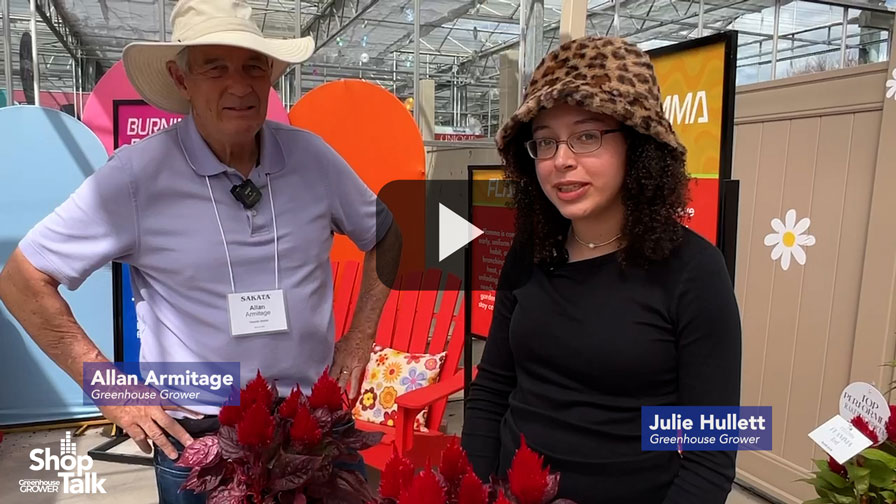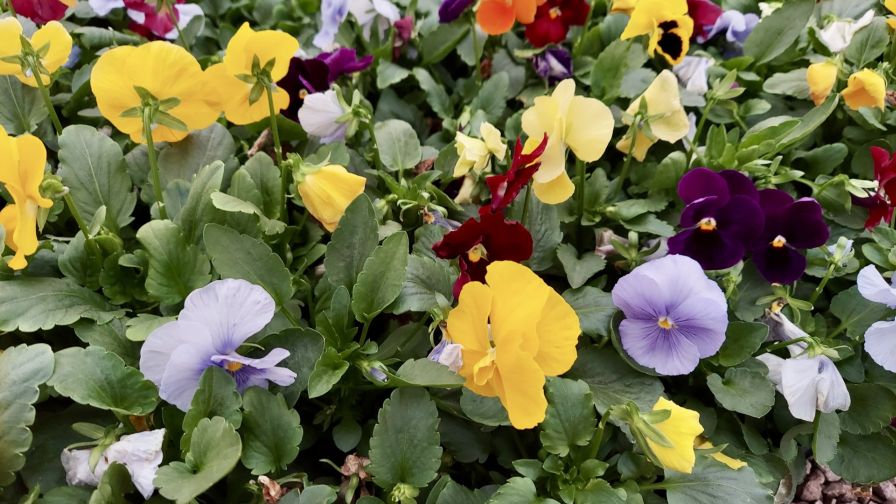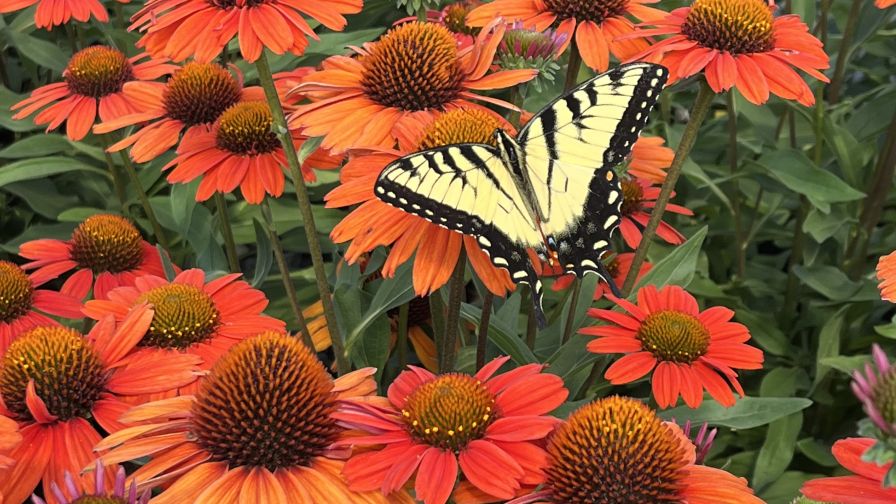Pricing Tricks Proven By Research
 Although there have been very few studies conducted about plant pricing, pricing in general has been studied in just every imaginable way possible.
Although there have been very few studies conducted about plant pricing, pricing in general has been studied in just every imaginable way possible.
We’ve sifted through some of the most important studies for you. Most of these you’re already using, but some of the other studies may surprise you.
The Magic Of 9 Cents
This pricing strategy is one of the most famous. We humans tend to pay a lot more attention to the numbers at the left, but not so much to those on the right. So a $3.99 plant next to a $4.00 plant feels less expensive. And since the right numbers don’t register that much, why in the world wouldn’t you get the most pennies you can? If you price your plants at $3.98 or $3.85, consumers don’t care that deeply that they’re less expensive than $3.99. In fact, studies show they’re more likely to buy plants at $3.99 than at a few cents less.
And if you multiply the number of items you sell per year by the cents you increase the plant by, it has a much bigger influence on your profit than you would think.
How do experts know about this? Several universities over the years have conducted tests where women’s clothing catalogs are sent out in randomized groups. Group A can buy a blouse for $29.99, while Group B can buy it for $30. The $29.99 price always has higher sales.
The power of 9 still has impact outside of the cents column. Shirts selling at $29 sell more than shirts sold at $24, similar studies have shown.
Bundle Pricing
Bundling products under one price is a classic strategy. Think of combo meals at fast food, or Amazon.com’s “Frequently Bought Together” feature.
Research shows when bundling is an option, customers will often buy a little more than they intended in order to get the deal. And as the Amazon bundling shows, bundling can increase the number of second or third purchases made even when there isn’t a deal involved. Amazon merely offers customers the convenience of adding to their purchase without having to go to another page, but the price is not discounted.
Research from Harvard has shown bundling does have a weakness. If you are offering only the bundled deal and the individual components are not also available for purchase, then sales drop 20 percent. If those components are an option, then sales increase.
Free Gift With Purchase
A form of bundling is the free-gift-with-purchase model. Cosmetic companies do this often to introduce new products. There is some evidence that, although sales increase sharply during the sale, subsequent sales of the previously “free” item are less. The theory is that consumers assume the product is cheap enough for a store to give it away for free.
A few factors can mitigate this assumption. Letting customers know the value of the free giveaway helps. As does offering the product in sample sizes.
Psychological Price Barriers
Nine is not the only magic number when it comes to pricing. There are several psychological barriers that affect how people buy.
Most items in plant stores are less than $100. The main price barriers you should be aware of are:
- $10
- $20
- $50
- $100
Here’s how it works: People tend to buy in similar patterns for just about anything between $10 and $20. So a pot that costs $14.50 will sell at similar rates as pots sold at $19.99. Similarly, shrubs that sell between $20 and $50 are often seen as similar. A $35 azalea is not seen as significantly cheaper than a $49 azalea, while that $49 azalea is considerably less expensive than a $59 hydrangea.
Obviously, these are tendencies, not rules. And the type of product does have some impact.
I’m sure there’s a study for another type of pricing psychological barrier. If someone goes into a store planning on spending only $50, they can be persuaded to spend more. But what are the psychological barriers that make them feel like they’re stretching their budgets before it turns into a complete reworking of their budget?
Dollar Signs Repress Sales?
Several intriguing studies show that when you use dollar signs, it suppresses sales. The thinking is that the symbol for currency makes people much more aware of their own finances. When the price is given without a dollar sign, either stripped away completely or spelled out, sales improve.
So products with a sign with $10 will not get as many sales as a sign that has “10.00” or “10 dollars.”
This pricing study is most often seen at restaurants, but several studies were conducted in catalogs and at store locations. Again, there are likely studies looking out how this pricing strategy plays out in different settings, from luxury outlets to bargain stores. It would be interesting to see if it works at places like plant retailers as well as it works at a boutique.
Offer Choices In Prices, Not Just Product
Several studies have shown that consumers spend less when only one price is offered on a product group. So if they see three orange juice cartons of similar size, all with the same price, customers are less likely to make the purchase than if each brand has a different price point.
The theory is that customers want to feel like they have a comparison to help them understand the value. They may have a preference for one of the brands, and if it’s different in price than the others, they are more likely to buy it. If it’s more expensive, then it confirms their opinion that the product is superior. If it’s less expensive than another, they feel like they’re getting a bargain.
A different version of this at work is something researchers call “anchor pricing.” If you stock more expensive versions of a product you want to sell, its sales will not only increase, but customers will be happier about their purchase. Emory University’s Ryan Hamilton spoke about this to a group of plant retailers at our Ultimate Buyers’ Workshop a few years ago. He conducted a study where DVD players were being sold in two different stores. In one, the main one on sale was placed next to a bargain priced one. That store owner wanted to seem more affordable. The second store sold the same mid level DVD player, but it was sold next to a luxury player with a price that was double the cost of the mid level one.
Following what the other comparative studies showed, similar levels of the mid level DVD player were sold. What was intriguing, however, was what happened when participants were asked if they would buy a popular DVD at the store. About 75 percent wanted to by it at the store with the luxury brand displayed near the mid level one they purchased. Only 50 percent were willing to buy the DVD at the store with the bargain DVD player. Those that didn’t thought they could find the DVD cheaper somewhere else.
Recommended Reading
Want to read up on these studies yourself? Here’s a list of research papers and mainstream articles that have been written about them:
One of the most helpful articles I found was on a site I wasn’t familiar with, HelpScout.net. This article on psychological pricing is easy to absorb and has logical illustrations. Really helpful!
Here’s the Forbes article about the Harvard study on bundling.
Berkeley University conducted the study that compared bundle pricing performance versus free gift with purchase. This is a researcher-written study, so be forewarned — it’s not easy reading. But there are some great insights you can glean from it.
Fast Company, a great business magazine you should be following, has a good article explaining the psychology behind the different pricing strategies.
Here’s CBS News’ article, “Pricing Psychology: 7 Sneaky Retail Tricks.”
And here are a couple of round-up type articles on pricing: “Internet Marketing 101: Mental Price Barriers,” and “Pricing Experiments You Might Not Know, But Can Learn From.”










